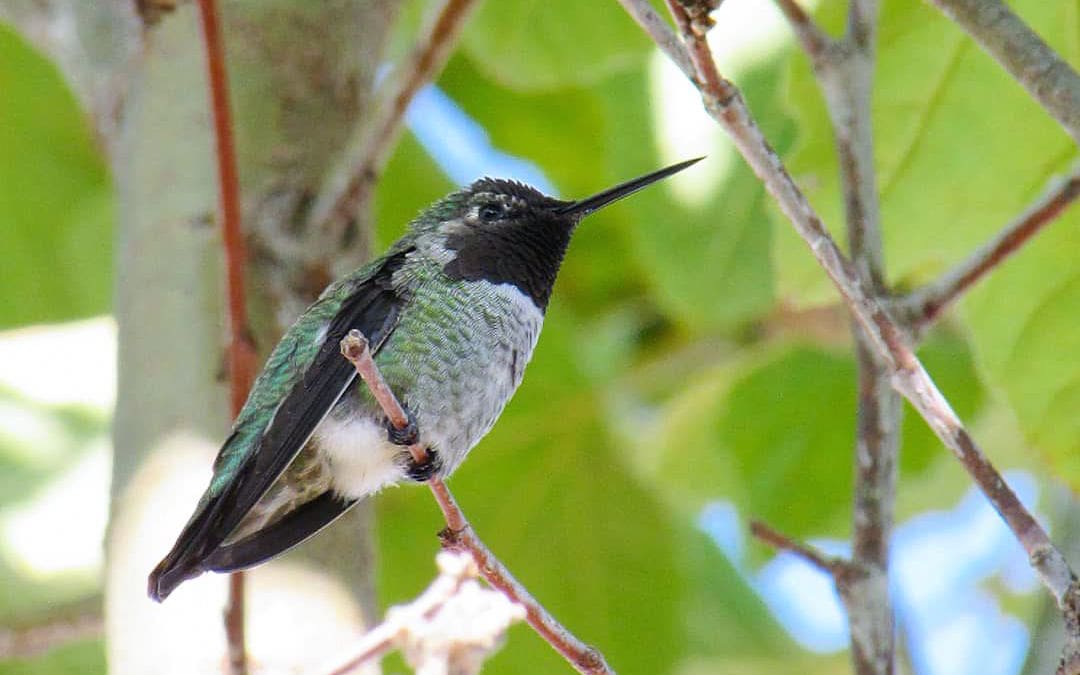
How to Turn Your Yard or Garden into a Certified Wildlife Habitat
When we first started gardening, we were selfish and narrow-minded. Truly! We saw the garden as a place to serve us, to feed us, and strove to keep critters out. Needless to say, we have a drastically different mindset these days! We view our garden as a place for both “us” and “them”, and actively work towards that goal. Now, our garden is a certified wildlife habitat.
Nothing makes us happier than to watch the bees and butterflies flit from flower to flower, spot a lizard dart across a path, or open the door to a yard full of birdsong in the morning. And don’t even get me started on the hummingbird shenanigans! Maybe these things are already commonplace in your garden – and if so, that is wonderful! For us, starting with a chunk of barren lawn in a populated, non-rural setting, it was something we had to work for. And I think that makes it all the more rewarding.
Read along to learn how to transform your yard into a more equitable, sustainable, welcoming place for wildlife and pollinators. We’ll go over the five key components that you will need to address to do so, and how to become a Certified Wildlife Habitat – if you want to make it official! Our property became certified last fall. Whether you choose to get fully certified, or simply want to make some wildlife-friendly improvements to your yard, thank you in advance for your noble efforts!
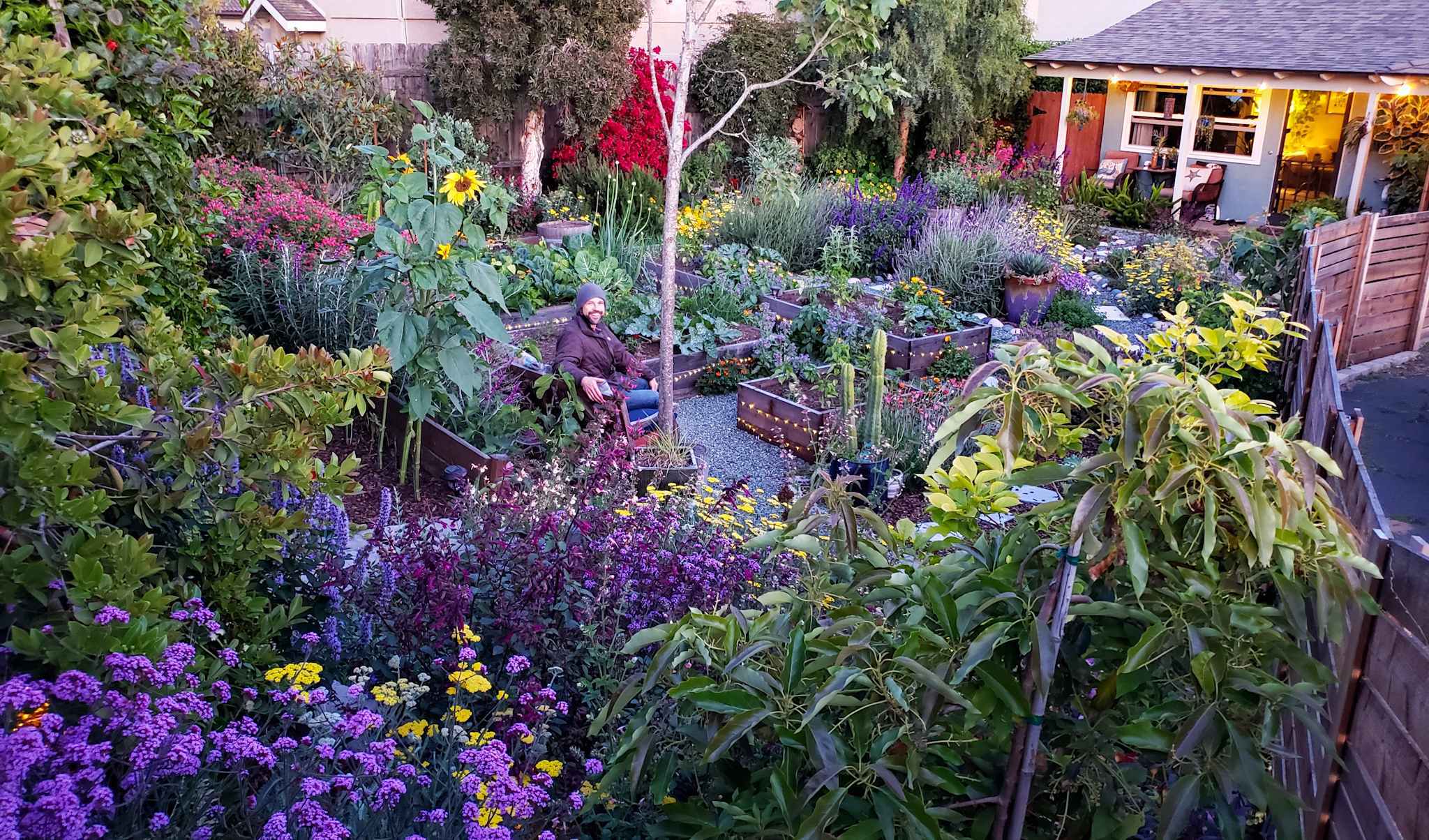
So, what kind of “Wildlife” are we talking about?
According to the dictionary, wildlife is defined as:
living things – especially mammals, birds, and fishes – that are neither human nor domesticated.
Merriam Webster Dictionary
Personally, I’d like to focus on the “living things” portion of that definition, and not play favorites to only mammals, birds, and fish. Helloooo bees and butterflies! The sorts of wildlife that may visit each of our gardens will vary drastically depending on our geographic locations and type of neighborhood. Frogs, deer, rabbits, bats, moths, birds, lizards, mice, coyotes, gophers, raccoons, skunks, turtles, opossums, bears… the list goes on! Obviously, some of these guys will be welcome with open arms more than others.
If you are maintaining an edible garden for yourself, there is a valid concern to protect your precious crops from “pests”– but make a little room in your space and heart to share as well! By creating a wildlife-friendly habitat within your yard, the pest concerns are oftentimes mitigated with natural checks and balances. Since we’ve focused on turning our yard into a mini-ecosystem over “just a garden”, we have found far less need to intervene with pests!
That said, you can always choose who you want to encourage to be a part of your ecosystem the most. For example, certain types of bird houses or bird feeders attract different species of birds – and some are more “squirrel proof” than others. Use fencing around (or over) raised garden beds to prevent access and destruction by larger mammals or birds if needed. We have opossums, skunks, and raccoons that cruise through our yard at night and nibble on crops here and there, but they’re also providing a valuable service! Did you know that opposums primarily feed on small rodents, snails, slugs, and insects? The circle of life… it is a beautiful thing.
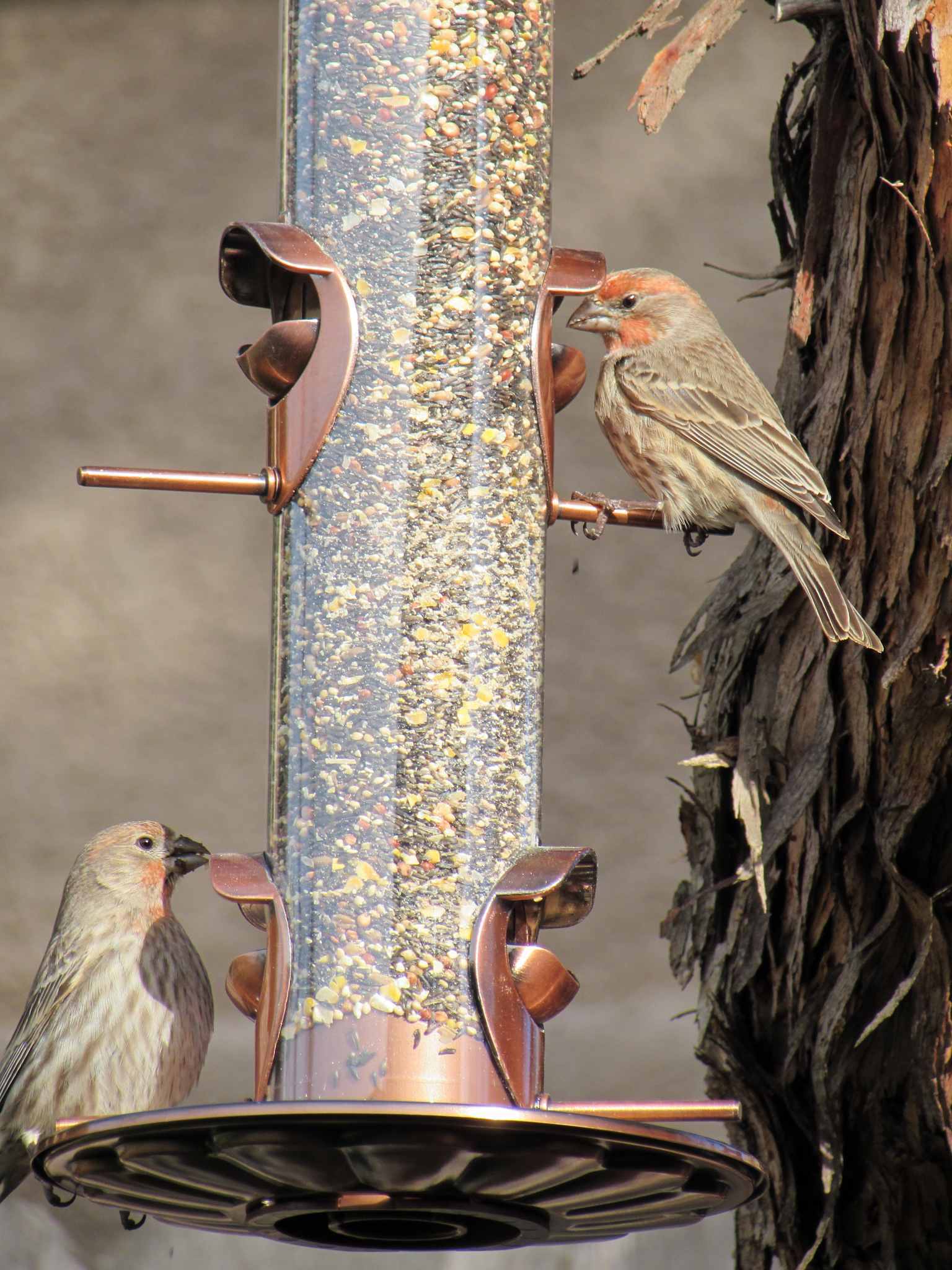
What is the difference between a yard or garden, and a wildlife habitat?
A yard may simply be a yard, and a garden only a garden. Some gardens are maintained far too tidy or sterile to accommodate much wildlife. Wildlife like it… wild, after all! On the other hand, obviously not every wildlife habitat is a garden. The forest, for example. What we are striving for is a beneficial blending of the two!
The National Wildlife Federation (the organization that provides certifications, which we’ll get to!) lists 5 key elements that are essential to a healthy wildlife habitat:
- Food
- Water
- Cover
- Places to Raise Young
- Sustainable Practices
Let’s go over each of these elements, and explore examples of how to incorporate them into your space. But before we dive in, I want to make sure we all understand a very important point: Size does not matter!
Someone could have a full acre of manicured lawn, rose bushes, hedges, dahlias, and daisies – but still not qualify to be dubbed a certified wildlife habitat. They may be missing some important element like a water source, or use broad-spectrum pesticides that destroy life. On the other hand, a little 100 square foot garden might be capable of providing all the things needed to sustain and nurture wildlife. Sure, maybe not all shapes and sizes of wildlife, but some. And some is better than none! Even a balcony garden, school yard, urban lot, or workplace can become a Certified Wildlife Habitat.
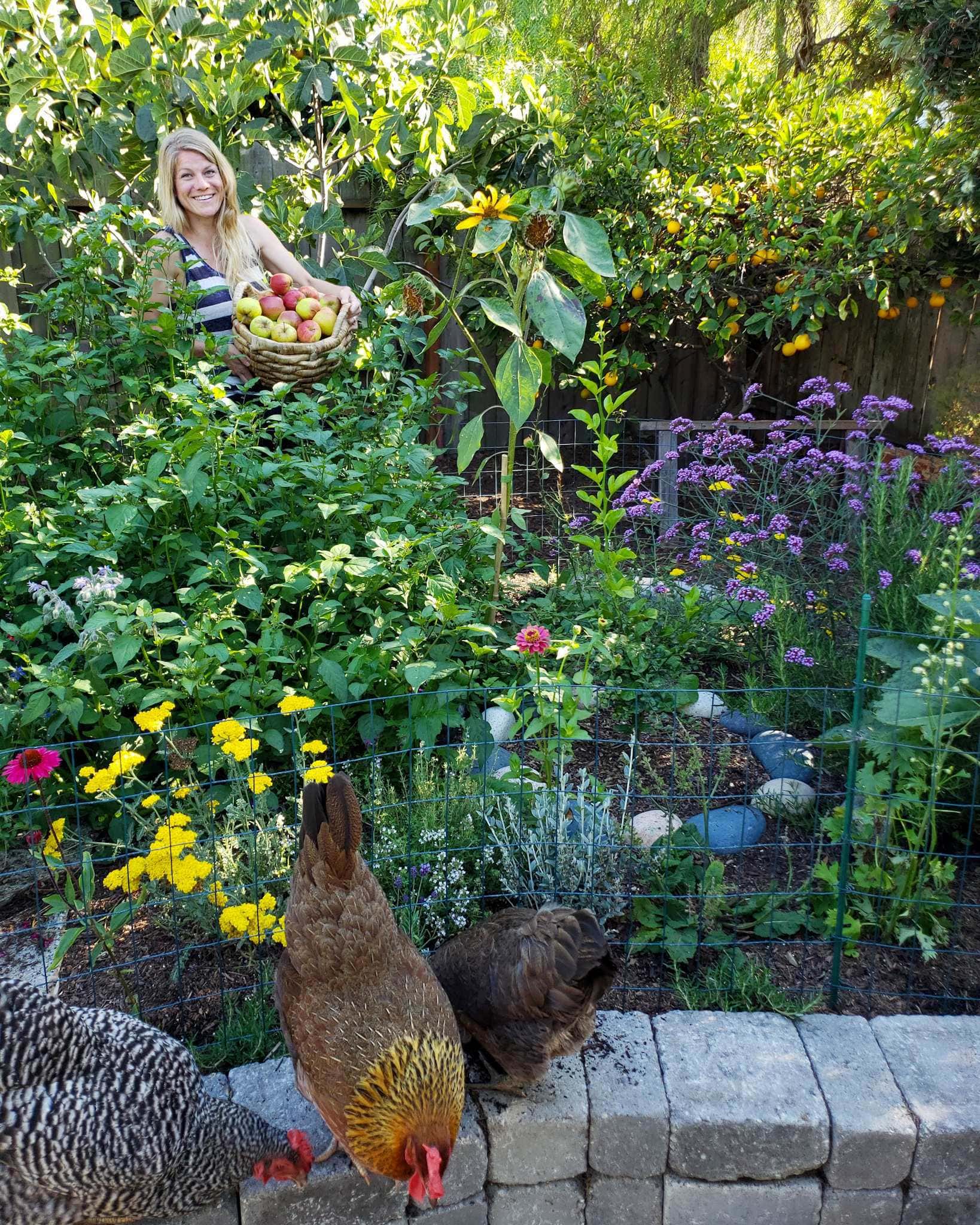
1) Sustainable Practices
Yep, I am starting out of order. Why? Because if you don’t treat your garden in a sustainable manner, the rest of this is a moot point. The types of sustainable practices that are encouraged to become a Certified Wildlife Habitat include:
Go Organic
Discontinue use of any and all non-organic pesticides (especially broad spectrum pesticides), fertilizers, or other synthetic chemical products in your garden. This also includes poison for pests, like rat bait. Rodent poison poses a huge risk for wildlife – and pets! Furthermore, only use sprays or products that are approved for “certified organic” gardening as a last resort.
Instead, encourage beneficial insects and natural predators, use physical pest control methods, and other mechanical means to manage pests and disease. The National Wildlife Federation promotes the use of Integrated Pest management, as do we! To learn more about our organic pest control strategies, check out this article. Finally, reduce waste, recycle your garden trimmings, and create natural organic fertilizer by actively composting at home!
Choose Native Plants
Native plants are those species that are indigenous your area. They are most suited to your climate and will grow best, naturally. Furthermore, the local wildlife are likely already familiar with native plants and have a good use for them – either as food, shelter, or maybe both! As much as possible, seek out plants that are hyper-local to your region. At minimum, choose plants that are native to your state or country.
Soil & Water Conservation
Tending to soil health and implementing water-wise practices benefit your mini-ecosystem and the planet alike. Use mulch over exposed soil areas to reduce erosion and retain moisture naturally. Choose drought-tolerant plants, and consider setting up a rainwater capture system! Rather than relying on inefficient overhead sprinklers, convert as much as you can to drip irrigation and soaker hoses. Last but definitely not least: limit, reduce, or eliminate lawn area. That act alone can negate the need for spray irrigation, and drastically reduce water demand. Plus, turf lawn does not benefit wildlife! Check out this guide on how to kill, smother, or otherwise remove turf grass to replace with food, flowers and more.
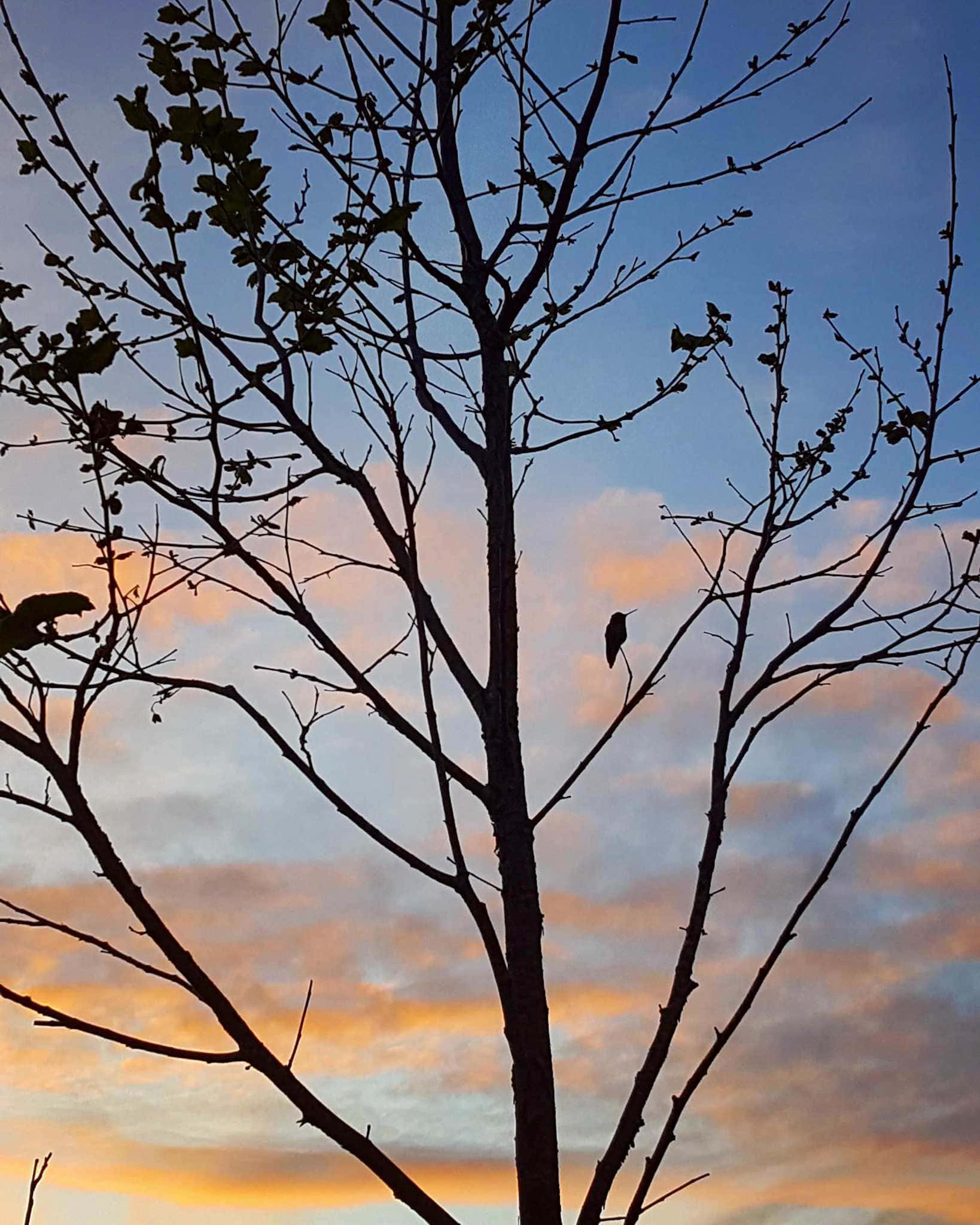
2) Food for Wildlife
One way to provide food for wildlife is to plant edible trees, shrubs, and other plants – and being willing to share a little with the fauna in your garden! However, keep in mind that “edible” can mean something very different to us than to wildlife. Many plants produce seeds that you and I may not dine on, but are a great feast for critters.
A Certified Wildlife Habitat is required to provide at least three varieties of food sources for wildlife.
- Plant flowers (or flowering plants) that provide sources of nectar and pollen for bees, bats, butterflies, moths, and certain birds. This can include annual flowers, perennials, or even large shrubs and trees that produce pollen or nectar. To learn more, check out our article: “The Top 23 Plants for Pollinators: Attract Bees, Butterflies, & Hummingbirds!”
- Birds enjoy eating seeds from dried flower heads, including coneflower, sunflower, daisies, zinnias, and more. Therefore, allow some of your fading flowers to stay and go to seed in the garden. Allow areas to go un-mowed, since native grass and “weed” provide flowers and then a lot of valuable seed thereafter.
- Decaying wood, mulch, and leaf litter serves as food for insects, lichen and fungi – which in turn feeds other wildlife! This is another significant reason to go organic and avoid using broad-spectrum pesticides. Critters who feed on insects will help keep the pest insect populations under control for you. Furthermore, when they’re satiated by insects or other wildlife lower on the food chain, they’re less likely to turn to your edibles!
- In addition to natural food sources, you can also provide supplemental food for wildlife – especially during seasons where other food is sparse. Examples include the use of bird feeders with seed, hummingbird feeders with nectar, squirrel feeders, suet treat blocks, and more.
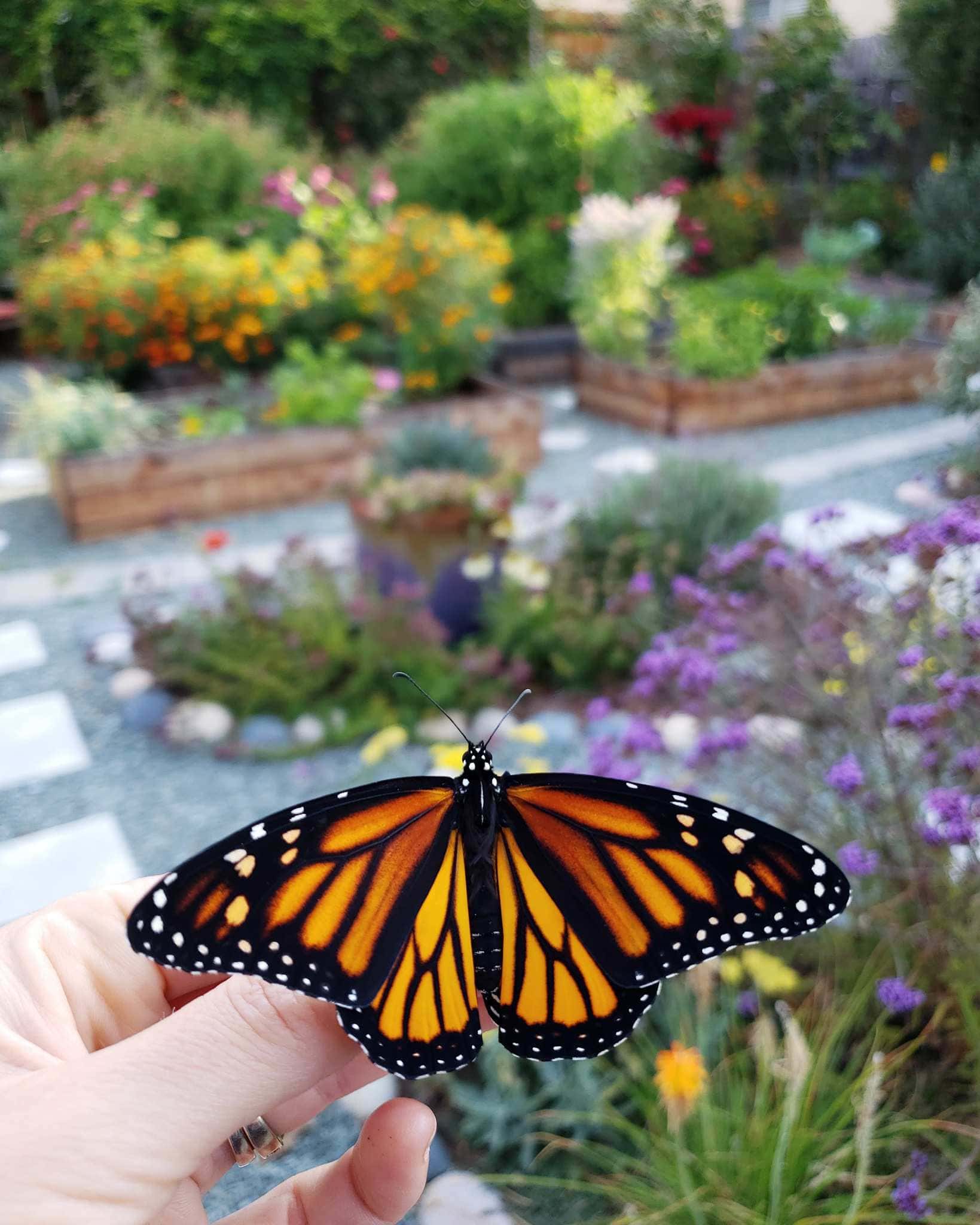
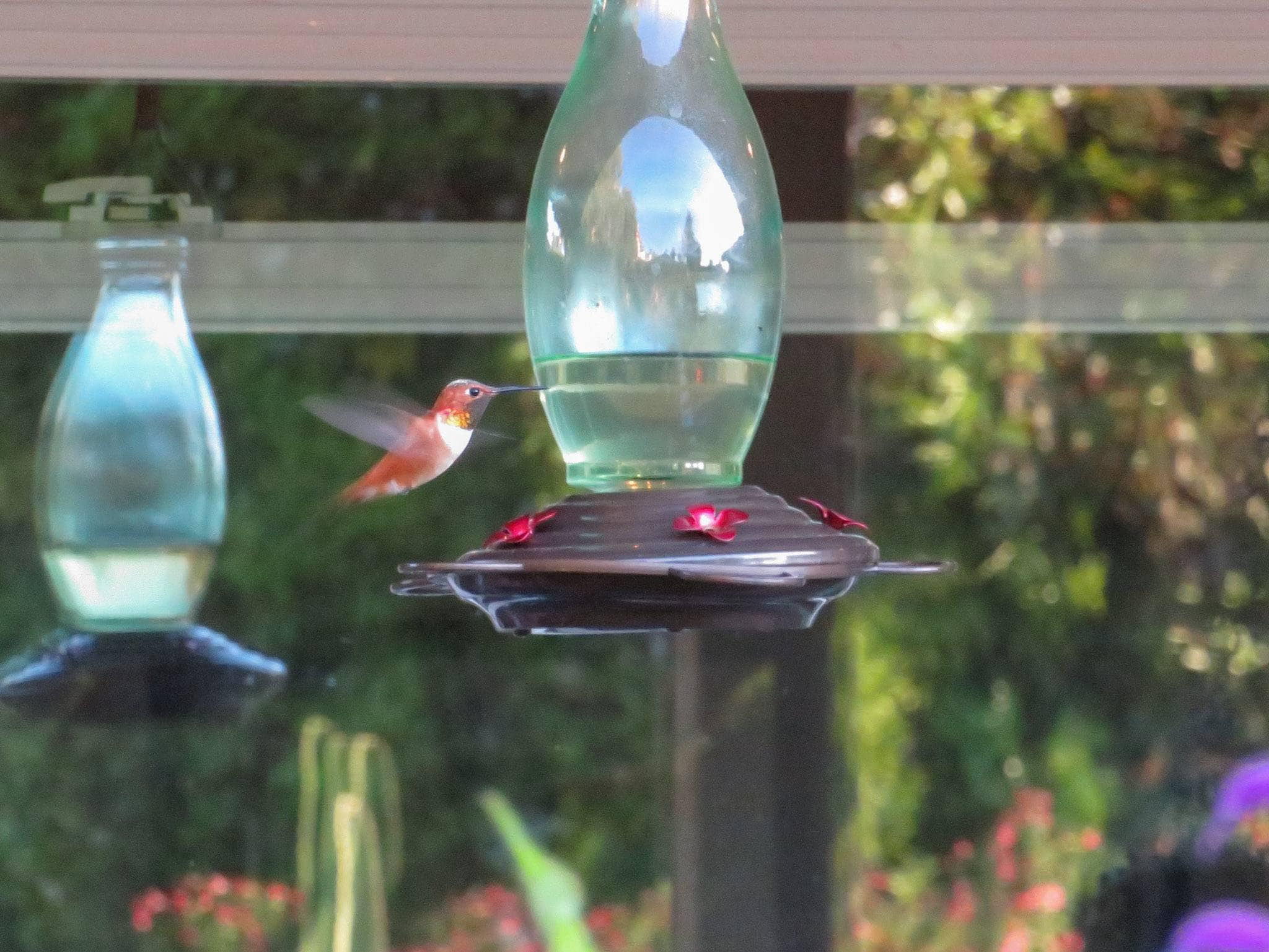
3) Sources of Water for Wildlife
As you know, all lifeforms need water to survive! Water is what makes our planet so unique and lush, and able to sustain life. Some wildlife will appreciate water in obvious ways – to drink, like you and I. Others, for bathing. Even more, certain aquatic organisms, insects, or amphibians need it to reproduce. Once we found dragonfly larvae in our patio fountain – they are so rad, and look like little alligators!
To qualify as a certified wildlife habitat, your space will need to incorporate at least one water feature. We currently have two bird baths and a fountain, with plans to add more!
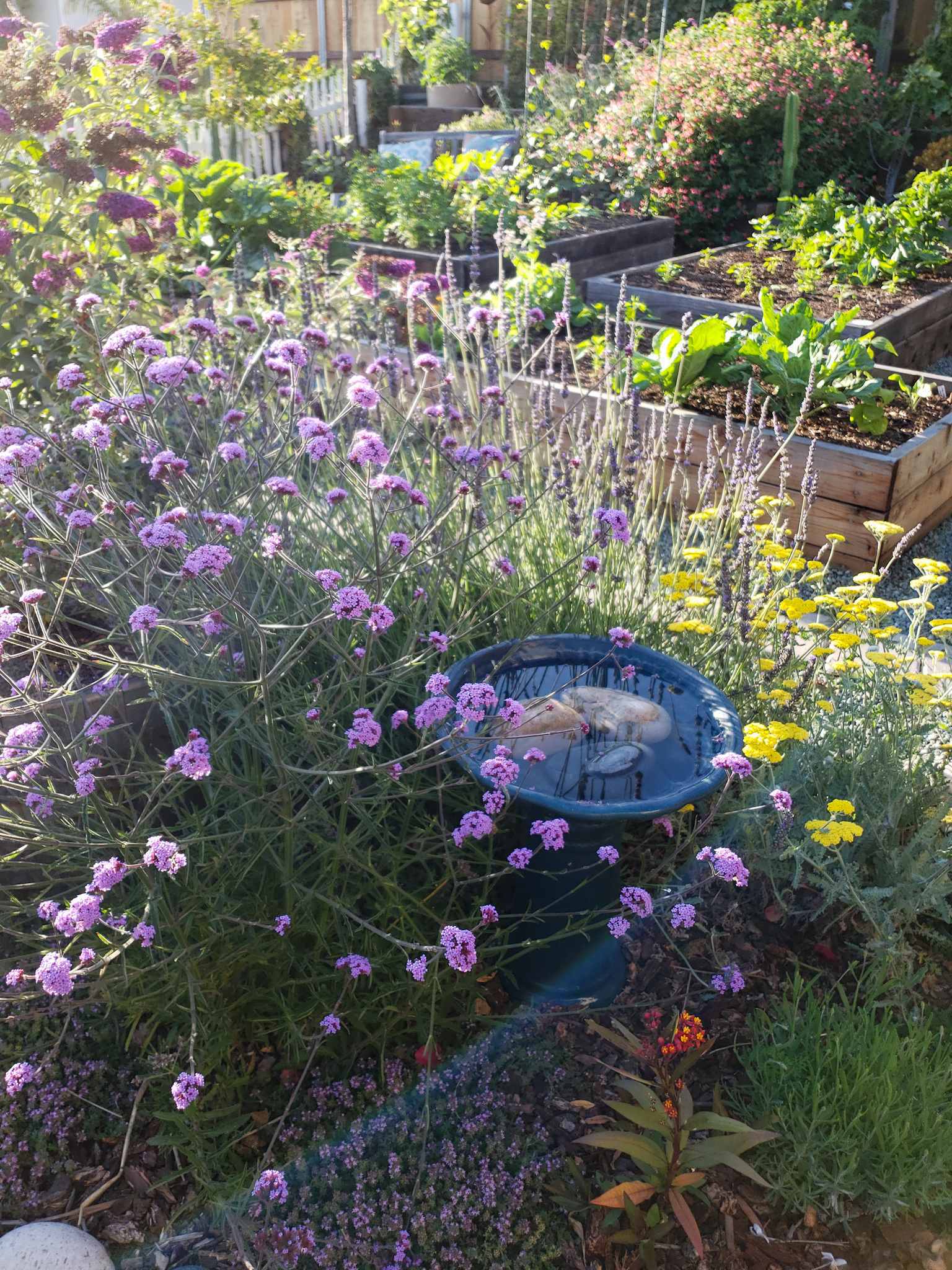
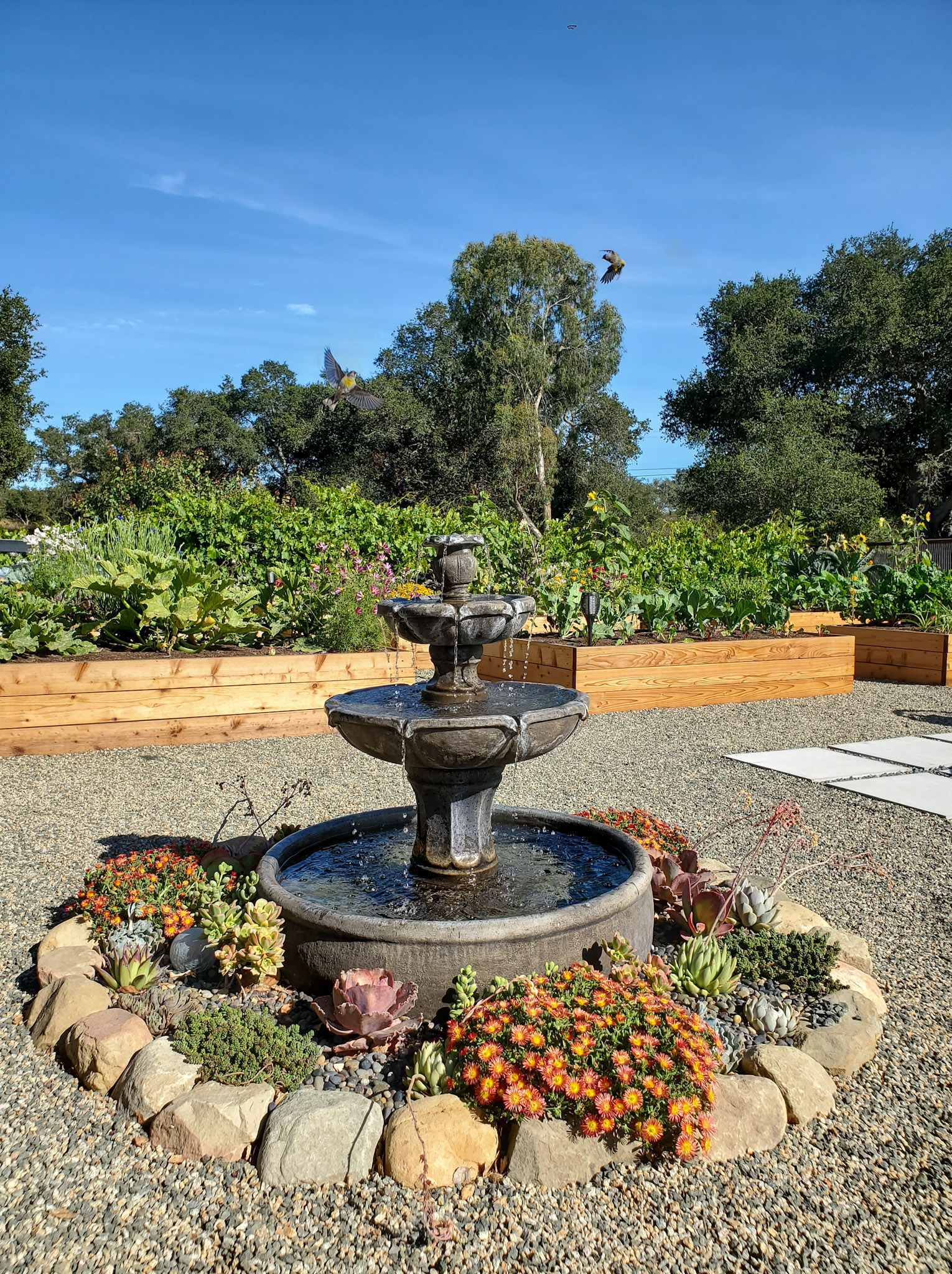
Here are several ways to provide water sources to the wildlife in your garden, and related tips:
- Add classic bird baths. Do make sure to fill and clean them frequently. The local birds will thank you!
- Similar to hanging bird feeders, bird waterers can be hung around the yard.
- Bees and butterflies enjoy shallow puddles of water. Consider adding water and stones to a shallow bowl (or in a bird bath) or investing in a dedicated bee waterer to create a place for them to rest and safely drink. Our Western Fence Lizards love their Repti-rock waterer!
- Install a fountain. If providing power is a limitation, there are some pretty sophisticated and inexpensive solar pumps out there these days! You’ll have the added benefit of enjoying the soothing sounds of running water – a true win-win. Look for fountains at your local garden supply or landscape centers.
- Create a pond or stream in your garden. These don’t have to be massive, and could even be done on a patio! Aaron’s parents have a great little frog pond made from a half wine barrel. If water weren’t so scarce in California, and we lived in a location that had frogs naturally, I would create a frog pond in a heartbeat!
- Along those same lines, create a container water garden to grow beautiful aquatic plants.
- Pumped, circulating water in a small fountain should prevent mosquitoes from breeding, but this is a definite concern in stagnant water. Therefore, consider adding mosquito fish or other natural mosquito larvae predators in small ponds. Frogs and lizards will help there too!
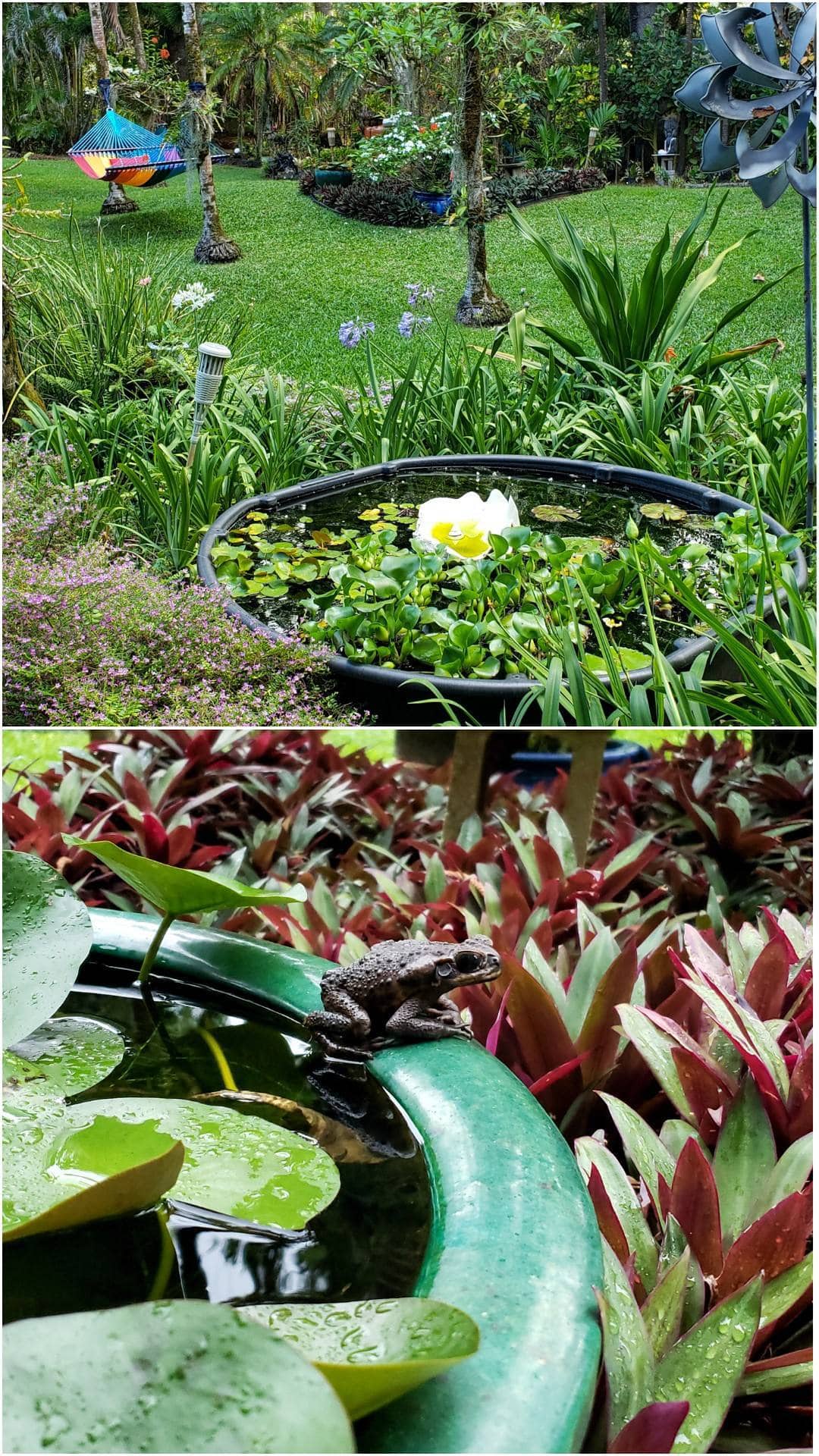
4) Shelter & Cover for Wildlife
Just as we need our human homes to feel safe and secure, our little critter friends want the same! Wildlife need shelter for protection during extreme weather, and cover to hide from predators. Also, for taking naps. Because we all need our beauty sleep! Various members of the wildlife community will utilize different forms of shelter and cover, so try to provide a variety of options. To become a Certified Wildlife Habitat, your space must include at least two forms of shelter.
Here are some examples of shelter and cover for wildlife:
- Trees, thickets, or a wooded area. Mature evergreen trees are especially useful, but any and all trees are welcome! If you’re in the beginning stages of transforming your space, plant trees first since they take the longest to get established. If you need some help in deciding what type of trees to plant in your garden, check out this article: “How to Choose the Best Edible or Ornamental Trees for Your Garden”. It discusses things like chill hours, cross-pollination, and edible tree options for every climate!
- Thick shrubs, vines, or brush piles. Don’t get too caught up on perfectionist pruning and maintenance! Allow some areas of your yard to get nice and dense for our friends.
- Lawn provides very little shelter or cover for wildlife, except maybe worms and grubs. Consider removing lawn and replacing it with shrubs, annual flowers, tall native grasses, garden beds, and/or mulch ground cover. Even if you aren’t interested in removing all of your grass, create wild areas around the perimeter of the yard. Or, consider tall native no or low-mow grasses!
- Fallen logs, burrows, caves, boulders, and rock walls create excellent hiding places for a range of wildlife.
- Water gardens or ponds provide shelter for amphibious and aquatic wildlife.
- Butterfly-lovers can create enclosures to provide the larvae shelter from predators during their journey from caterpillar to butterfly. That is what we do with monarch butterflies, and are also a registered Monarch Waystation! To learn more about raising monarch butterflies, please see this article: “All About Monarchs: How to Attract, Raise & Release Monarch Butterflies”.
- Bird Houses or Bat Boxes, which also double as places to raise young – discussed more below!
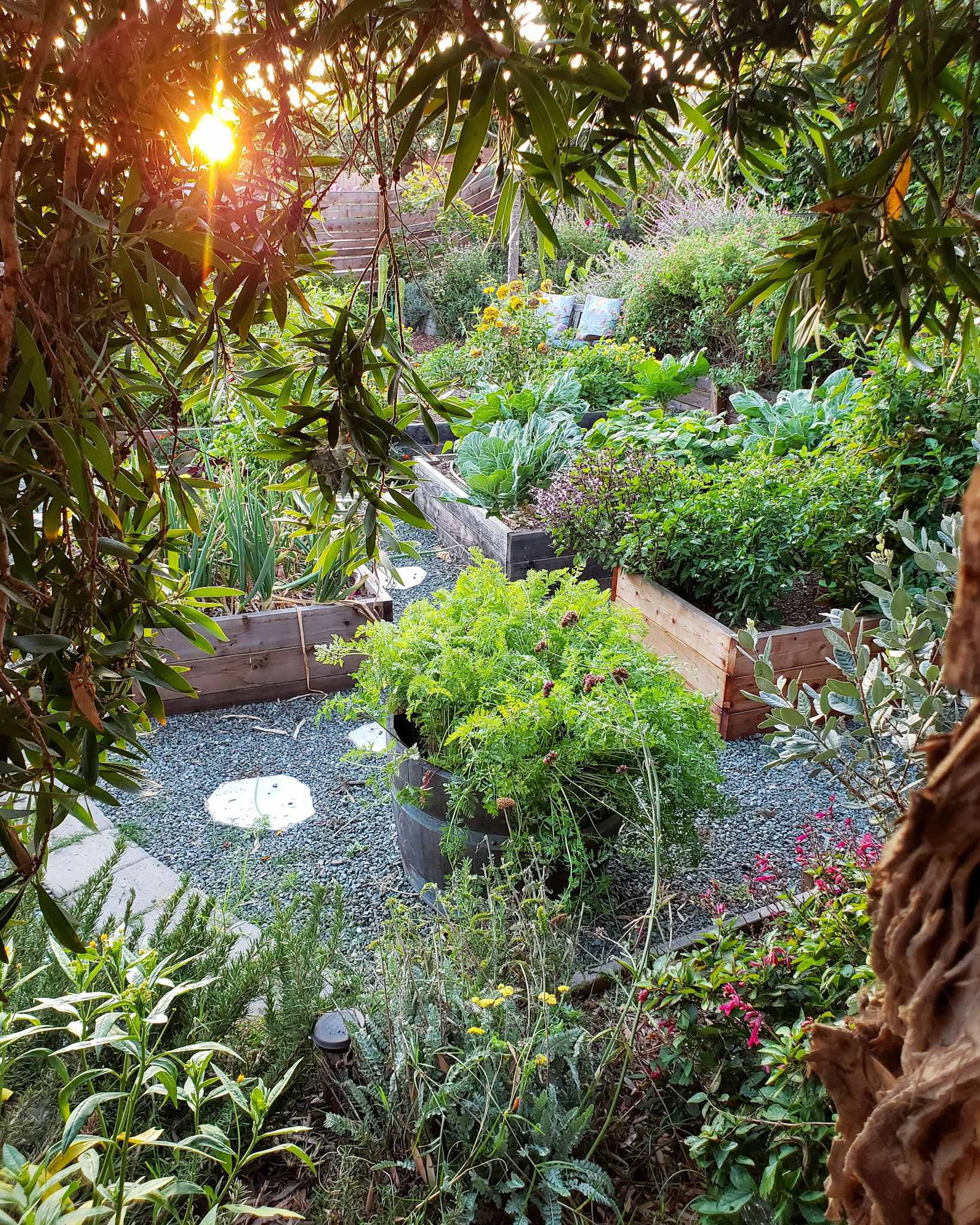
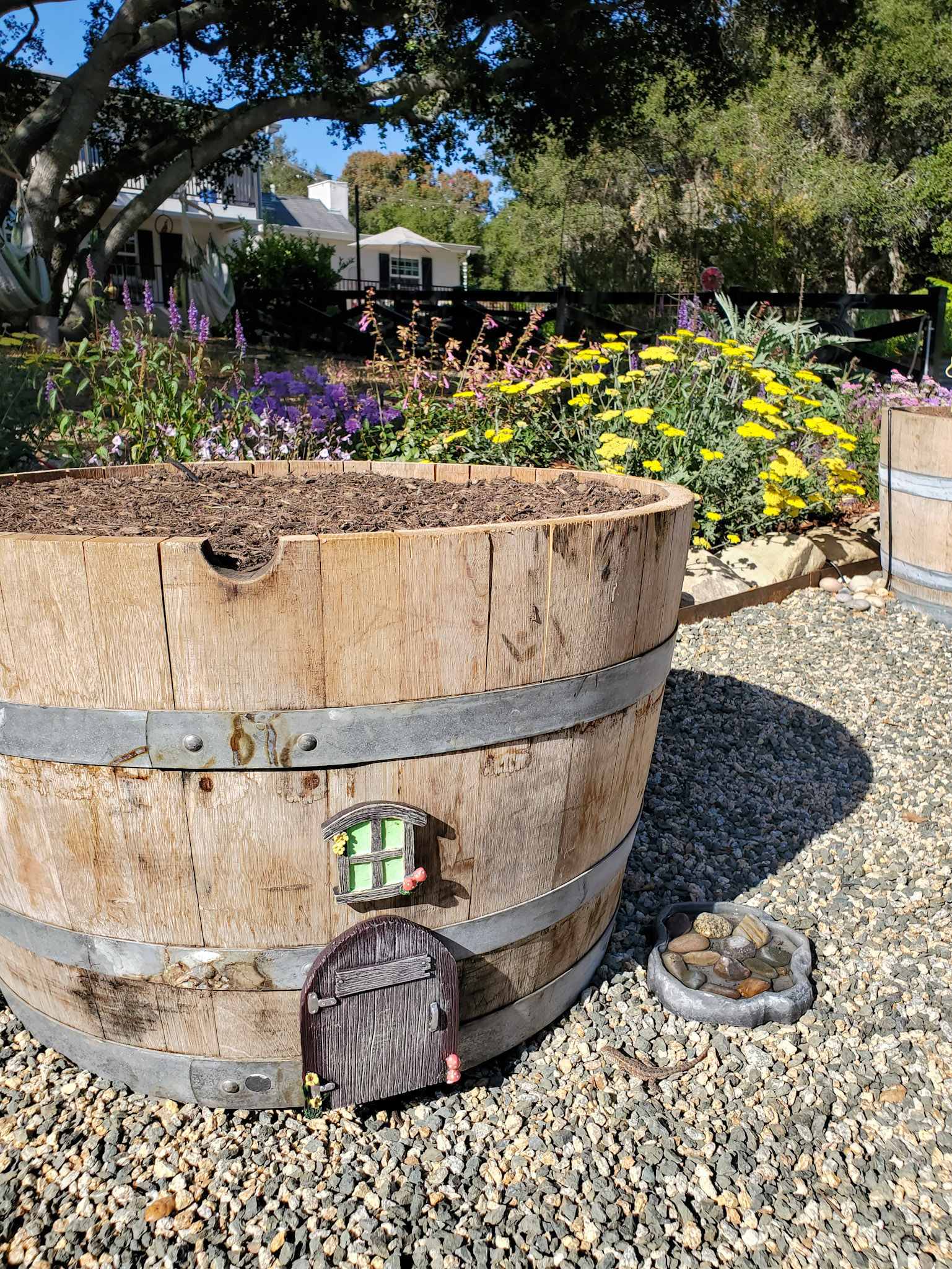
5) Places to Raise Young
Finally, as we implement all of these wonderful wildlife-friendly practices in our gardens, we need to also ensure that our new inhabitants can successfully continue for future generations – by providing habitat for all stages of their life cycle! A Certified Wildlife Habitat is expected to have at least two types of habitat for wildlife to reproduce and raise their young.
Wildlife can raise their young in all of the same shelter and cover examples we explored above. Furthermore, here are some additional things to consider:
- Take caution and care when you are pruning trees, shrubs, and vines especially during active bird nesting seasons. You never know what magic might be happening in there!
- Bird houses provide a perfect little space for them to nest, away from the majority of predators – and your trimming shears! However, many birds will not reuse nests and instead prefer a fresh space to start over, so it is best to clean out your birdhouse after each brood.
- Owl boxes provide a safe place for owls to nest and raise young. Owls also offer fantastic natural rodent control for your property! Look into what types of owls are most common in your area, since each species has slightly different preferences for the size, location and style of owl box.
- If you are interested in hanging a bat house, keep in mind that their preferred orientation is south or east, hung 12 to 20 feet high against a structure, and should receive at least 6 hours of sunlight per day. Bats are awesome predators of mosquitoes and other pesky insects!
- Provide host plants for caterpillars to reproduce and turn into butterflies! Monarch caterpillars eat milkweed, and milkweed alone. Swallowtails will munch on a wider variety of plants, including dill, parsley, carrot greens, and fennel. For a full list of butterfly host plants, click here!
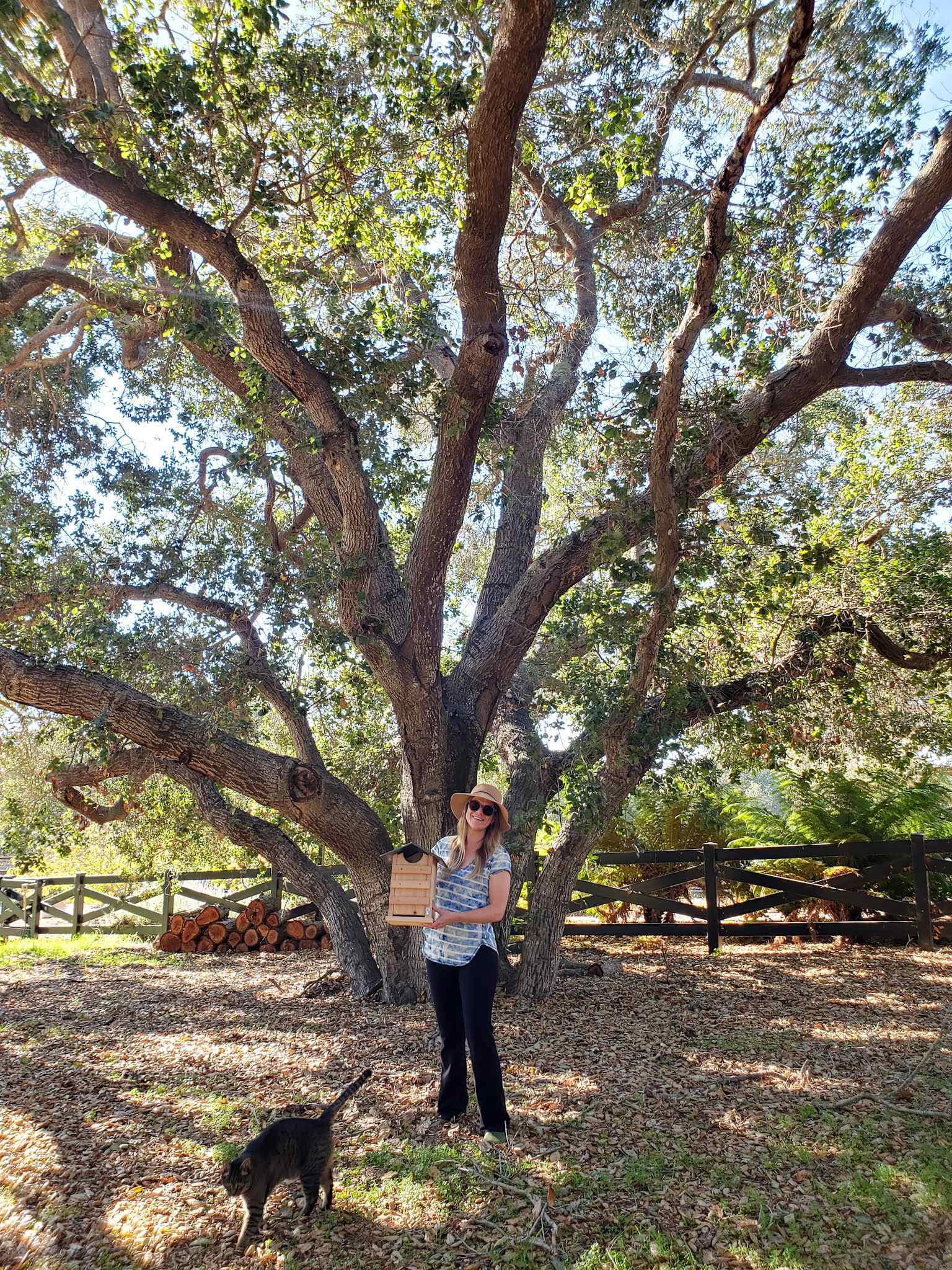
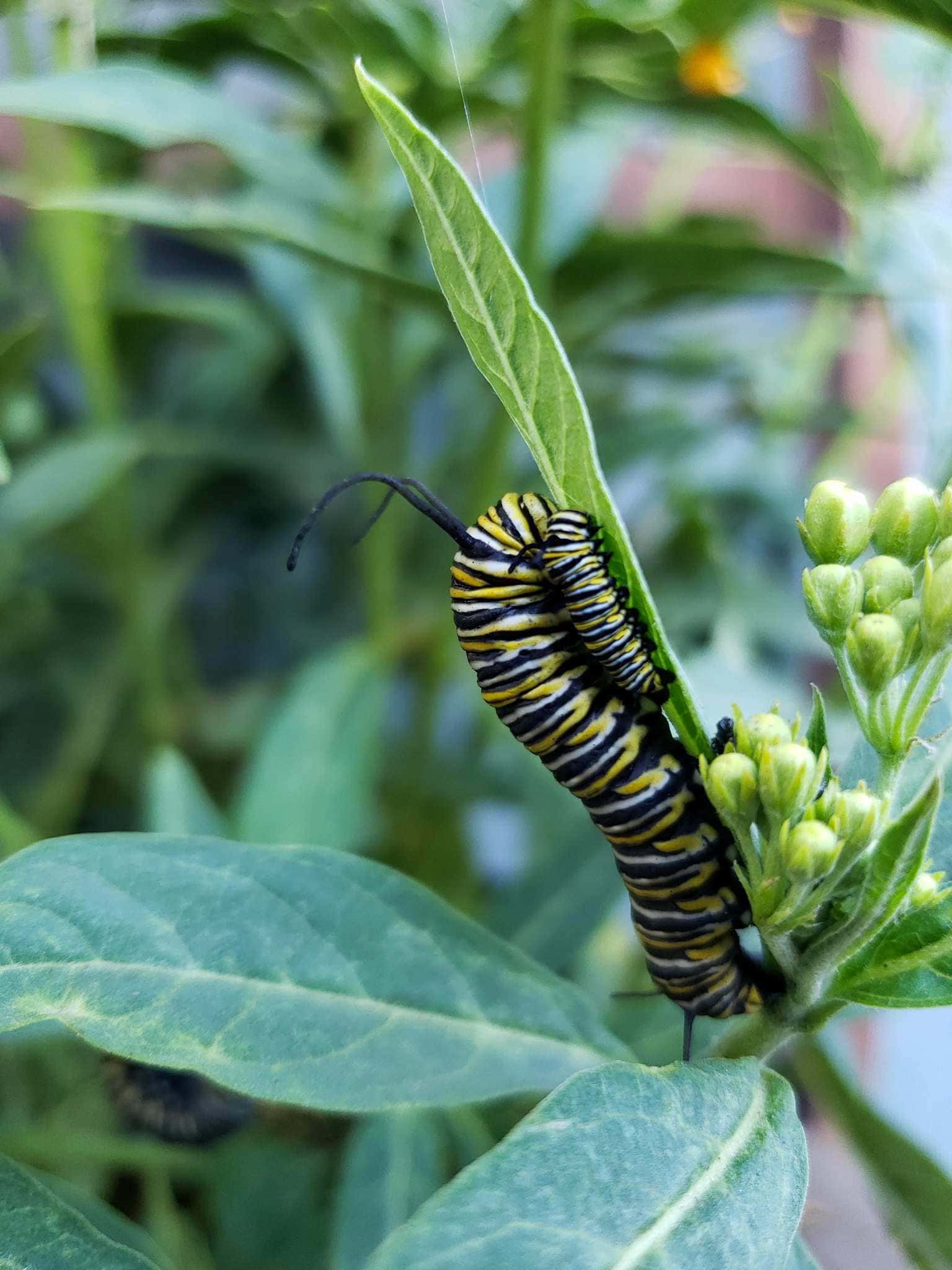
And now, without further ado…
How to Get Your Yard or Garden Certified as a Wildlife Habitat
Now that you know what it takes to provide food, shelter, water, and a sustainable living environment for wildlife, do you check all the boxes? If so, that is amazing! And if not? No worries. Continue to make improvements to your space as you can. Also, keep in mind that perfection is not the goal. While we strive to meet all of these ideals, I’ll admit that we do still have an odd non-native plant or two, and a couple overhead sprinklers where drip isn’t feasible – but we also have nesting birds, hundreds of bees and butterflies, a thriving beneficial insect community, and more. Just do your best.
Now, how to actually get certified: It is as simple as completing a self-certification checklist and registering with the National Wildlife Federation. You can do so here. There is a $20 fee associated, which goes to the non-profits efforts in wildlife conservation – something to feel good about contributing to! You’ll be mailed a paper certificate, with outdoor signs available for purchase as well. Don’t want to spend the money? I get it! We have many friends who check all of these boxes but decide not to get certified. They simply know in their hearts that they are stewards of wildlife, and that is good enough.
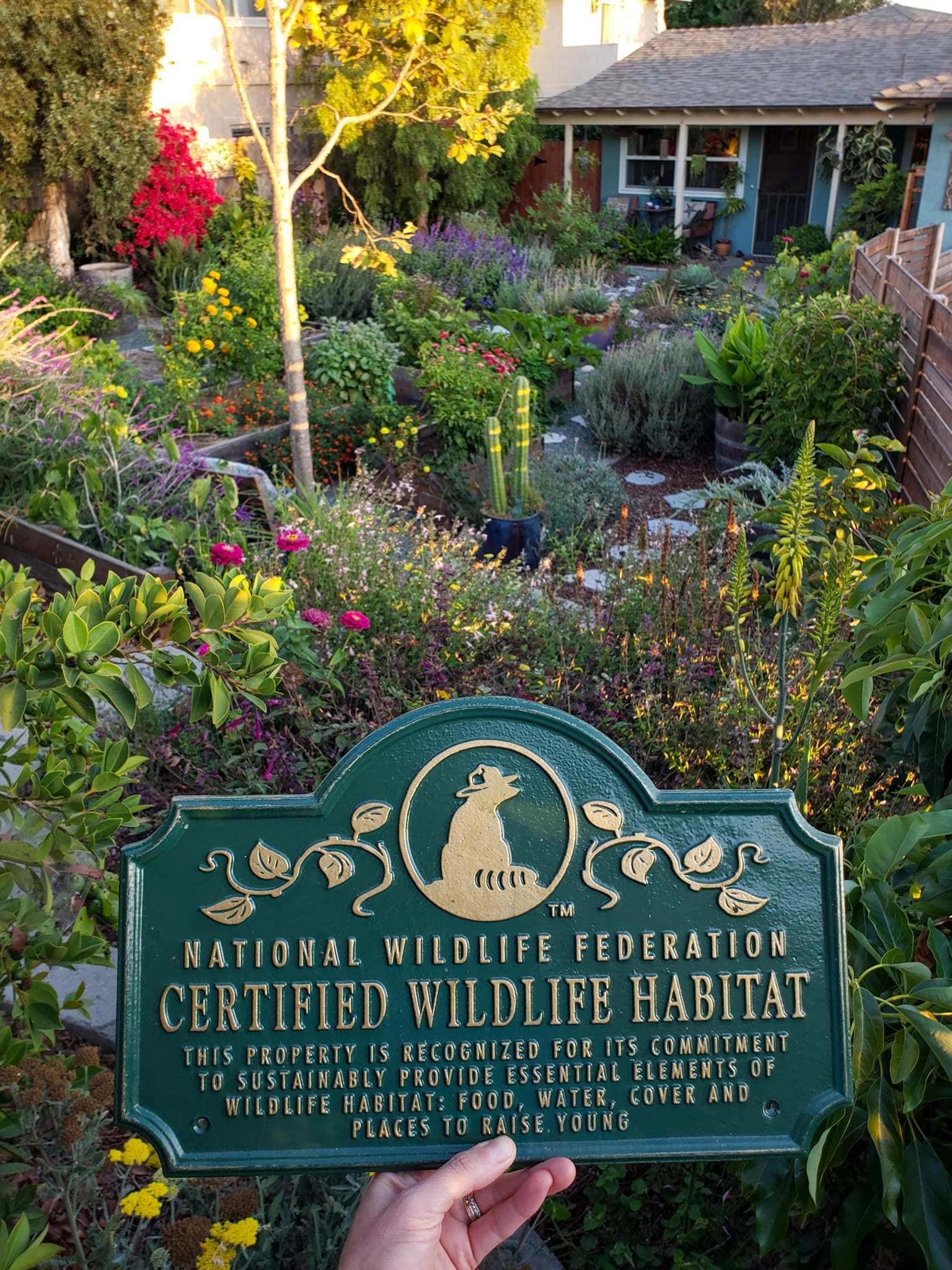
Want to Learn More?
I’m stoked that you want to learn more! Something that we really enjoy is learning to identify the different wildlife we see in our yard, neighborhood, or during other outdoor adventures. Back in college when I was taking field biology, I was required to get a few wildlife identification field guide books – and we still reference them all the time! I will admit, I have become a bit of bird nerd.
A few excellent field guides include National Geographic’s Guide to Backyard Birds, or their Field Guide to Birds of North America. Beyond birds, the Audubon Society makes excellent field guides for all types of wildlife, from insects to fish and flowers to mammals – for every state! This is the California version we have. We also love this book, all about gardening for birds, butterflies, and bees.


So, what do you think?
Do you already qualify to become a Certified Wildlife Habitat? Are you excited to implement some new ideas in your yard? Let me know in the comments! And if you’re just getting started on your space, be sure to check out our “How to Start a Garden 101” and “15 Mistakes to Avoid in the Garden” articles.
In closing, I hope you enjoyed this articled, because I truly loved writing it! Being stewards for wildlife has become a rewarding passion of ours, and hope you feel the same too – now or later. Please share this article to spread the wildlife love!



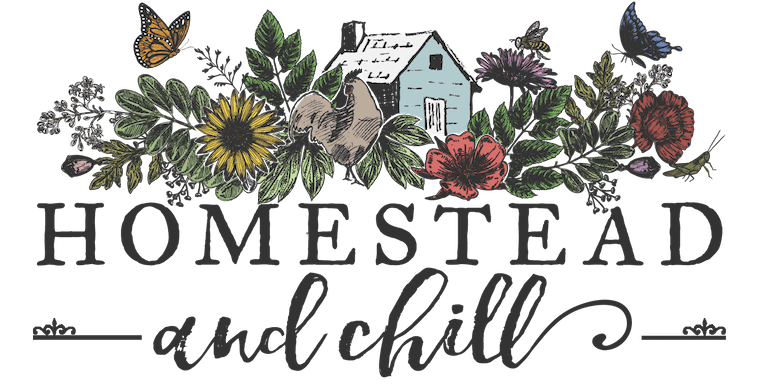
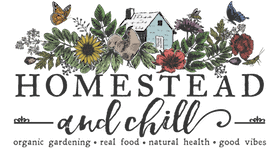



14 Comments
Ian
Not sure where you are but where we are the wall lizards are a problem here especially for the native garter and red stripe snakes, so while we too believe in creating habitat biomes, when I see a lizard they get a blast of water from the garden hose. It seems to work, at least in our back garden.
Aaron (Mr. DeannaCat)
Hi Ian, they are Western Fence lizards and they are native to where we are located. We have seen them eat grasshoppers and other pests that like to feed on our plants so they will always have a place in our garden if they choose to do so.
Lisa
This wonderful post just popped up in my feed. There is so much great information here, no matter where you live. When my husband & I graduated from college (1975) we moved to a very rural area. We never had to think about habitats because it was all around us. Almost 5 years ago, we joined our kids & grandkids in a city, 2000 miles away! We’ve made our little greenspace a pollinators’ delight using native plants since that seems to be most critical now. Our little pond with lily pads gives them a place to touch down as well. Thanks so much for giving us even more ideas!
Sharon.
Good article!!!
Rebekah Venturini
Just got certified! Yeehooo! I can’t wait for my sign to arrive. Thanks for all of the wonderful info, Deanna. You teach me so much!
Jennifer Lynn Lopez
I love your blog and newsletter – thank you for all of your enjoyable, informative, and useful posts! I just want to let you know that you *do* live in an area with lots and lots of frog species! Tree peepers are the most common where you live, there should be hundreds of them living in and around any spot that holds water during rainstorms – ditches, vernal pools, the estuary – and even some places where you wouldn’t imagine frogs living. Here’s a great introductory PDF: http://www.elfin-forest.org/Library/Fauna/Morro%20Bay%20Area%20Amphibian%20&%20%20Reptile%20Guide%2006.pdf
Vanessa Bland
I don’t comment much but so enjoy every email I receive from you!! I have also doubled my home & land recently & am working on yards as beautiful as yours! Thanks for all the information, it is so helpful! Just wanted to pop in and say how awesome yall are! Thank you so much for sharing your knowledge!
Aaron (Mr. DeannaCat)
Thank you so much Vanessa, we appreciate your support more than you know. Glad to hear you have more space to do what you obviously love doing and thanks for saying “hi”. Good luck and hopefully we hear from you again!
Heather
I want to plant local wildflowers near my vegetable garden to attract pollinators and beneficial wildlife, and the spot I have in mind is really close, only 2-3 feet away. I’m worried though about the wildflower seeds getting into my vegetable beds and causing lots of weeds to pull. How far apart are your vegetable beds from your wildlife habitats?
Aaron (Mr. DeannaCat)
Hi Heather, our current space has pollinator islands fairly close to our garden beds and we even plant annual flowers directly in our garden beds as well. We don’t worry too much about flower seed spreading as it is usually fairly easy to get rid of tiny sprouts if they are in an area you don’t want them. This is also assuming you don’t over seed the wildflower seeds which would make it a bit more of a chore. A lot of our flowering plants are also perennials which don’t usually spread by seed as easy as annuals. Hope that helps and good luck!
Missy Collier
This is so awesome, and my yard already meets all of these requirements! How did you get that fancy green metal plaque? It looks like they are sending me a paper certificate.
Thank you for all of the information you put in your blog. It’s so helpful and inspiring.
DeannaCat
Hi Missy! That is so great that you’re a wildlife habitat too! I actually paid an extra donation for the plaque. I know they have yard signs still, but I am not 100% sure if they still offer these plaques or not
Brittany
I’m so excited to get our garden registered!!! How amazing! And what a cool way to get other people on the sustainable growing train! We just have a couple tweaks to make for providing shelter- so excited!!! Thank you!!!!
Becca
Deanna, I think this is my favourite article from you yet! This has been on my mind for a year or so now and I have wanted to take this next step. Thank you for not only outlining, but giving us a ton of motivation, examples and inspiration to be even BETTER wildlife stewards!